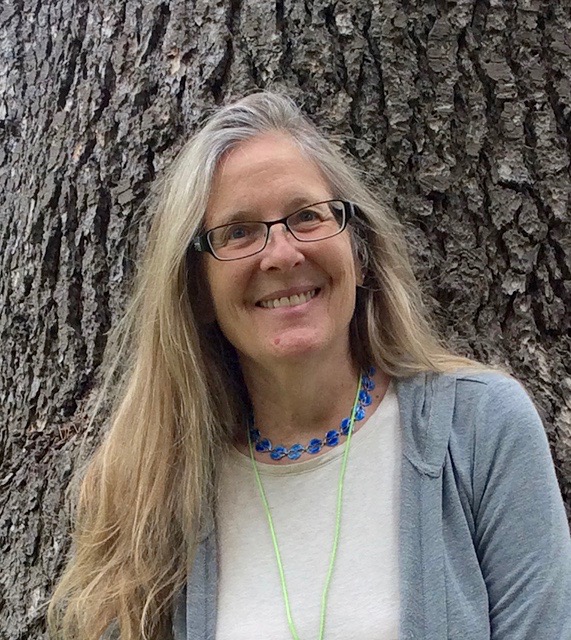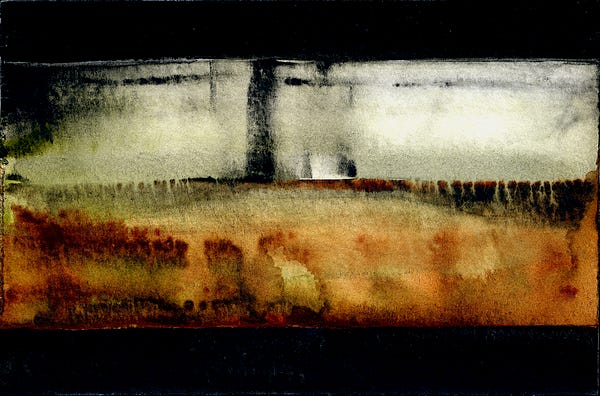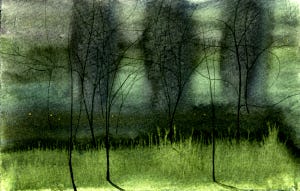“To express myself in that ‘calling moment’ is to give my energy in its purest, most positive form….”
 Lee Strasburger is a painter, photographer, and textile artist who has mounted one-person shows in Japan, Canada, the United Kingdom, and the United States. Her work has also been featured in group shows all over the globe. A true artistic nomad, she has lived in and drawn inspiration from many places — from her native California to Europe and Africa. She is also one of Broad Street’s most popular contributors, with work featured in several of our issues.
Lee Strasburger is a painter, photographer, and textile artist who has mounted one-person shows in Japan, Canada, the United Kingdom, and the United States. Her work has also been featured in group shows all over the globe. A true artistic nomad, she has lived in and drawn inspiration from many places — from her native California to Europe and Africa. She is also one of Broad Street’s most popular contributors, with work featured in several of our issues.
In keeping with our recent theme “Maps & Legends,” we just had to ask this peripatetic artist to tell us about her process and how her life and art intersect …
Dive into the full interview here, or begin with some highlights below.
*
Broad Street: What makes you commit to an idea, a style, a subject in a series or a single artwork? And how do you know when you’ve come to the end of it?
Strasburger: Let me start with your question regarding shifting styles. I think we all carry different selves inside us. There is my happy, playful self, which is filled with whimsy and feels very different from the contemplative, more serious side of me. My empathetic self, though, is present in both.

I’m very interested in the theory of genetic memory and am conscious of it working within my own body and mind. This is particularly evident in my somber images of postwar scenes, such as A Mystic as a Soldier [above], the title of which I borrowed from a poem by Siegfried Sassoon. For another example, the Bhagavad Gita is an allegory for the struggle toward liberating the self from the confines of the human condition.
Both my maternal grandparents actively served in WWI, one as a soldier, one as a nurse, and my parents both served in WWII Europe. Echoes of those wars have imprinted in me and I treat them with reverence and kindness; maybe my works of art are intended as testimony for my ancestors and all the poets, animals, and soldiers who died in war, to honor them.
The “other” voice that does not quite feel like my own yet is already in me—it compels me to express that sorrow, so poignantly manifested in the poems of writers such as Wilfred Owen, Robert Graves, John Keats, and a multitude of others dating back over the centuries and continents.
I will often read a poem that takes hold in my imagination and go from there. Something speaks to me in a raw, visceral way, and my endeavor is to translate that sorrow and loss into the stillness of a painting. For example, the dead of winter can be very bleak, and yet below the surface new life is regenerating. I look out the window, and the branch of a dark, dead-looking bush against the whiteness or fading light stands out, crying to be painted. I feel insensitive because I had not noticed its beauty until that moment. […]
“If the passion is genuine and you know it, you are already an artist. Hold on to your dreams and imagine them coming true every day of your life.”
What advice would you give to artists who are just finding their way in the medium and the world?
If the passion is genuine and you know it, you are already an artist. Hold on to your dreams and imagine them coming true every day of your life. Pay no mind to critiques that are misunderstanding of you or are disrespectful or patronizing; listen carefully to those that do treat you well and are sources of inspiration. Don’t take anything personally. Stay open, read as much as you can, be true to yourself, meditate before you work, and be respectful and mindful of your art supplies and the space where you make your work. A hog or a sable died to make your paintbrush, a tree was felled to make your pencil and paper, the earth was drilled to make the pigment and graphite you use.
Life is sacred, and once you understand and respect that, you will have the opportunity to surprise even yourself with what comes next.
Read the full interview–and see more of Strasburger’s work–here. And be sure to visit her website.

Conversations with John Keats on Hampstead Heath, 2011.
Photo credit (portrait): Karen Boatwright.








